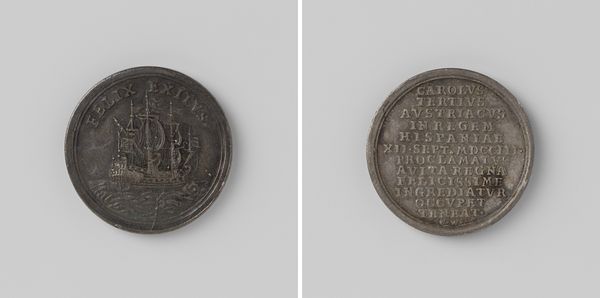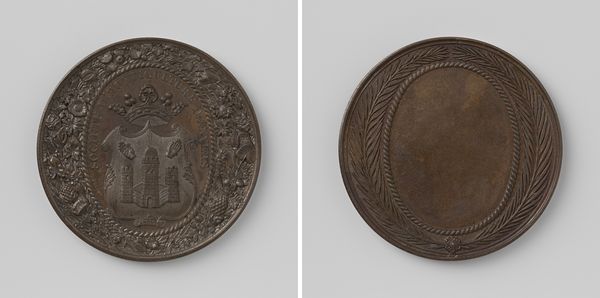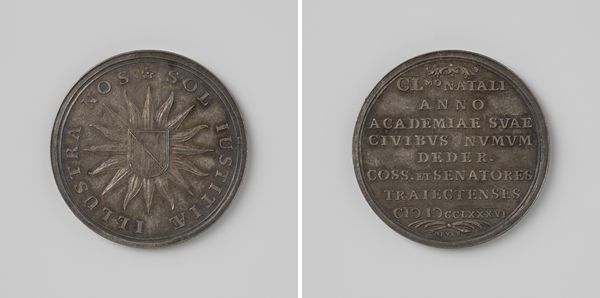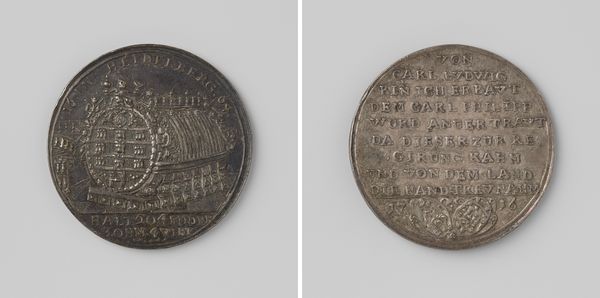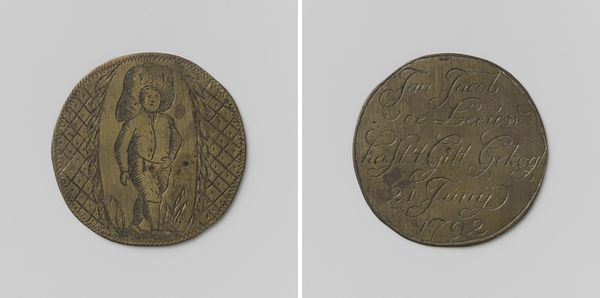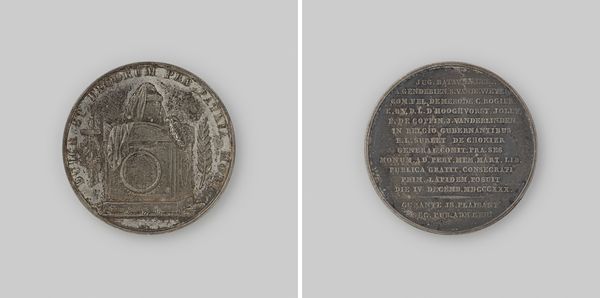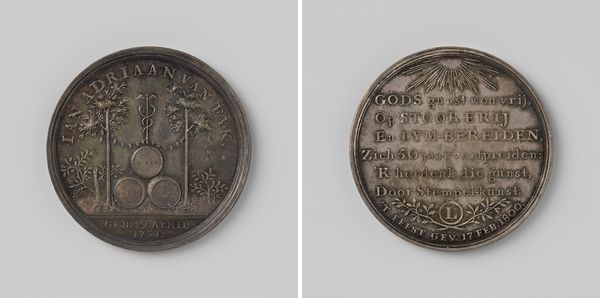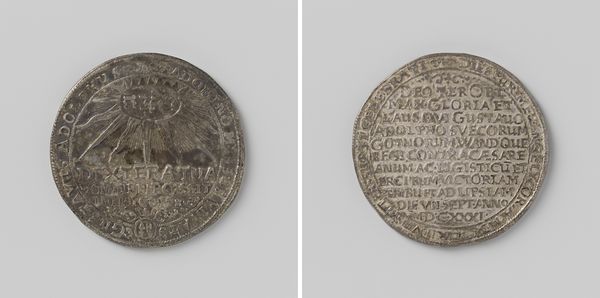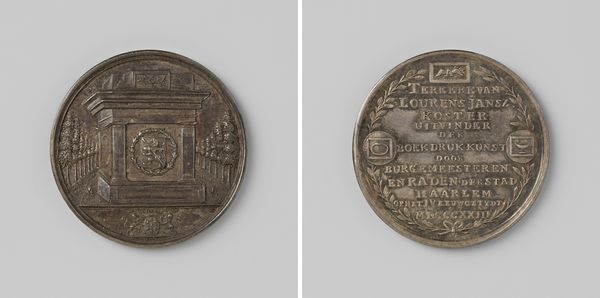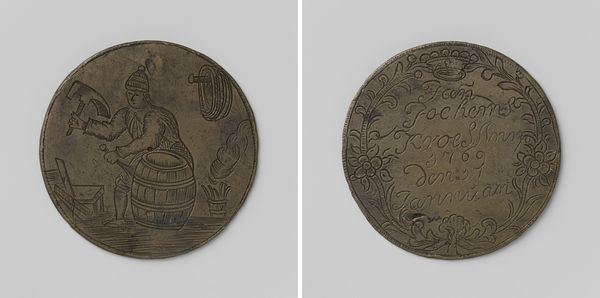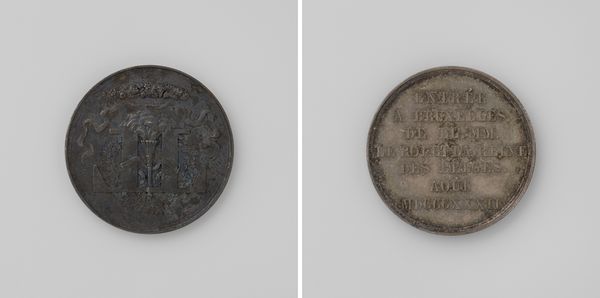
metal, relief, sculpture, engraving
#
portrait
#
baroque
#
metal
#
sculpture
#
relief
#
sculpture
#
history-painting
#
engraving
Dimensions: diameter 3.5 cm, weight 15.23 gr
Copyright: Rijks Museum: Open Domain
Editor: This metalwork, "Centenary of the University of Utrecht, dedicated to the students" from 1736 by Cornelis van Swinderen, strikes me as incredibly formal. The figures and the inscription on the reverse side suggest something very important. What do you make of its historical and cultural relevance? Curator: It’s intriguing, isn’t it? Consider that medals like these functioned as official commemorations. This wasn't merely a personal artistic expression. It’s a representation of power, tradition, and civic pride that played a key public role. Who commissioned it, do you think? Editor: Given it celebrates the University’s centenary, perhaps the University itself or a wealthy patron? It looks like it contains Latin inscriptions on both faces. What would be their intent, their audiences? Curator: Precisely. The Latin inscription speaks to the learned elite. These medals reinforced institutional legitimacy and sought to connect the university with classical ideals. The use of classical imagery -- the sun representing enlightenment and perhaps an allegorical figure, demonstrates its aspiration to be seen alongside historical bastions of knowledge. Think about the politics embedded within choosing to celebrate the centenary in this particular way. How did this symbolic event solidify the university's place within Utrecht’s socio-political landscape? Editor: So, beyond a simple record, it acted as a declaration of the university's significance, positioning itself within a larger, prestigious historical narrative. I’d initially only looked at the medal aesthetically, but your view reveals the underlying currents of power and intention. Curator: Exactly! Recognizing these deliberate decisions provides a much deeper understanding of its social and political importance at the time and its lasting cultural relevance.
Comments
No comments
Be the first to comment and join the conversation on the ultimate creative platform.

